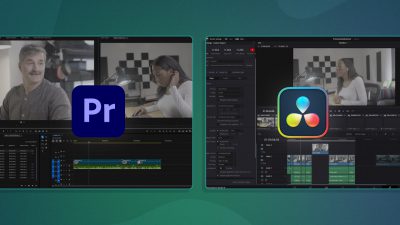When you decide to make a video, plan to spend about 70% of the total time on pre-production. That’s setting goals, planning, and budgeting.
We’ve isolated the 8 most common mistakes that people make in pre-production to help you get the most out of the planning period, and avoid costly (and time-consuming) mistakes in the long run.
What is Pre-Production?
Pre-production consists of the activities required to adequately plan a video. This includes everything pertaining to the shoot, as well as editing the final product.
The pre-production stage is inexpensive when compared with production (filming) and post-production (editing). The main cost is your time.
However, if you skip any important steps in pre-production, which a lot of folks do, you’ll be making up for it in production and post-production, which is far less cost-effective.
1. Forgetting expensive details when creating the budget.
Often people rush through the budgeting process, and forget details which can cause them to run well over budget later. If you’re making a proposal to your boss, team, or a client, you have to be meticulous with budgeting for exactly that reason—so don’t cheat yourself by not being careful when you’re producing your own videos.
Your budget should include every piece of equipment needed, every person you’ll have to pay, every incidental (such as accommodation, travel, food), and a variety of other costs.
2. Skipping market research.
You may think you know your market backwards and forwards. But, for each new substantial video marketing effort, it will be worth your time to gauge how your audience might respond.
This can be as simple as looking to see how other videos similar to your video concept have fared with your target audience. Use analytics from your previous videos as a quick resource to check out what’s working for your target audience and what isn’t. Two hours of research can make the difference between a video that wins or one that bombs.
3. Going in without a paddle.
First-timers often think that ad-lib videos, especially with company staff, are more likely to feel spontaneous and real. This can certainly be true.
However, you should always have a backup script, or, at the very least, a set of bullet-pointed topics to cover in case your subject loses his or her nerve in front of the camera.
4. Not building a storyboard.
A storyboard is a document, either on paper or created with specialized software, that clearly lays out all the shots you’ll need for your video, and all the transitions in between.
Having a storyboard helps you get everything you need during the production process. It saves you from having to schedule reshoots to capture things you missed. It also tells the editor precisely what’s required during post-production, helping the process run as efficiently as possible.
5. Expecting to arrange production equipment/resources at the last minute.
I can’t count the number of times someone on one of my production teams assumed they could borrow a piece of equipment, only to find out the night before that the owner was out of town, using it already, or had broken it.
This, of course, leads to delays and expensive last-minute rentals. To be on the safe side, arrange lending and rentals of your equipment and space well ahead of time. Keep a back-up on hand, just in case.
6. Not setting clear project objectives.
From the outset, you should know exactly what your video is trying to do or say.
“Make a really cool video about our product” isn’t specific enough. When the concept is vague, the production team won’t be able to easily decide how to make it happen.
Instead, clearly state the specific objective of your video. Such as, “Demonstrate the newest feature of our mobile app by showing it in action and providing two customer testimonials.”
7. Having a loose production schedule.
A common mistake, particularly in busy teams, is to have a “do it when we get to it” mentality about producing video content. Sometimes this works, depending on content, but often you end up actually wasting time by not coordinating production resources effectively.
To avoid this, take a few minutes to set specific deadlines for stages in the production process and make them public with the entire production team. That will help you stay accountable to those goals. In the end, this will be more timely and cost-effective than producing a video with an hour here and an hour there, because you can get everyone working together at once to get it done.
8. Skipping the all-important pre-production meeting.
The pre-production meeting is one of the first things to happen once the planning process is finished. This is where you lay out roles and expectations for everyone on the production team. It’s a crucial opportunity to discuss and agree on the production schedule, determine deadlines, give out a contact sheet and production schedule to everyone involved, and answer questions.
Skipping this will almost certainly lead to some kind of confusion down the line, so don’t leave it out.
Have anything to add or ask us? Try us at @SproutVideo or leave a comment below!








